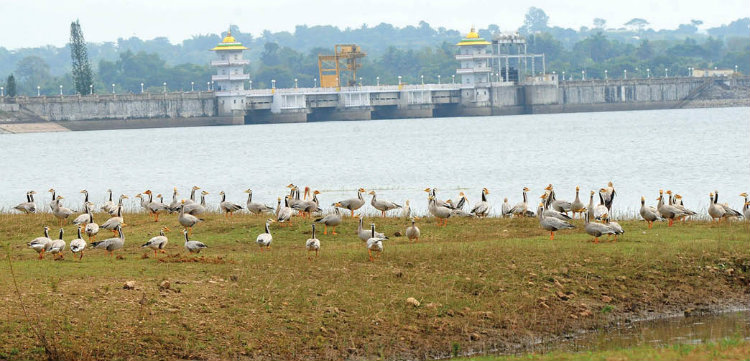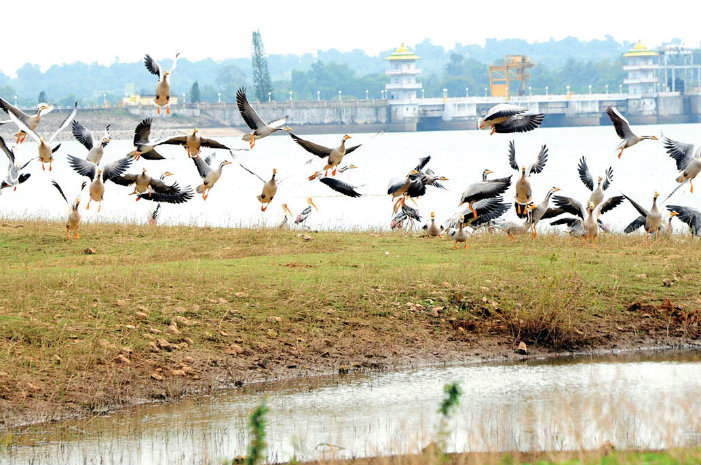Birds migrate, so do a lot of other species of animals. Migration is to move from one region of habitation to another region in search of various needs of life. Birds migrate mostly from the Northern Hemisphere to the Southern Hemisphere, during the winter months. The winters are colder and harsher in the Temperate Zones and Warmer and Congenial in the Tropical Regions.
The birds in the pictures here are one such species of birds — the Bar-headed Geese – Anser indicus, the highest flying migratory bird. These birds start their winter journey from the lakes in the Central Plains of Mongolia, flying at an altitude of 30,000 ft. where the temperatures reach as low as -60 degrees, which can freeze our blood and kill us in an instant, all the way crossing the treacherous Himalayas, higher than the tallest mountain peak — the Everest, and reach the Plains of India, to spend their winter.

These birds being crepuscular (late evening and dusk) in foraging habits, feed on the grass stubble and harvested rice crop stubble shoots adjoining the lakes they visit. They take the day time refuge in the midst of vast water bodies like lakes and reservoirs. They doze off in the warm winter sun in the midst of lakes and go on foraging trips in the dusk.

These are marvellous birds, which have been studied and their Trans Himalayan Migration Journey has been recorded, by tagging the birds with Radio Collars and Identification tags, which have been sighted, recorded and reported back to the Radio Collaring Centre at the Institute of Biological Sciences in Central Mongolia.

These wonderful birds have been migrating to our neighbouring Lakes and Reservoirs since aeons. We need to protect them and marvel at their navigational abilities and physiological endurance needed for the 6200 miles long journey.
—Ragoo Rao, Ethologist
[These pictures were captured at Kabini Backwaters by Jakkahalli Murali of H.D. Kote]








Recent Comments